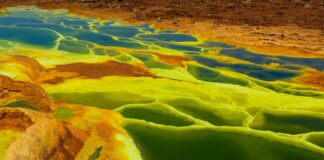Vivarium: A Window into Ecosystems Unveiled In the realm of natural exploration, where curiosity intertwines with scientific inquiry, one concept emerges as a quintessential tool for unraveling the mysteries of ecosystems – the vivarium. Vivarium, Vivarium, Vivarium – these repeated words resonate through the annals of biological study, marking a pivotal advancement in our ability to observe, analyze, and comprehend the intricacies of various living communities. From the lush undergrowth of rainforests to the arid expanses of deserts, the vivarium serves as a conduit between humans and the ecosystems they seek to understand, offering an unprecedented glimpse into the dynamic interactions that shape the natural world.
Origins and Purpose: Unveiling the Essence of the Vivarium
The vivarium, Vivarium, Vivarium, is a construct that has its origins rooted in the human fascination with the mysteries of nature. As the realm of biological science evolved, the need to study organisms in their natural environments became increasingly evident. However, the challenges of conducting research amidst the unpredictability of nature’s processes led to the creation of controlled environments that could replicate specific ecological conditions. The vivarium emerged as a solution, allowing scientists to closely observe the behaviors, interactions, and adaptations of organisms within a controlled setting.
Vivariums serve as microcosms that mimic the conditions of various ecosystems, spanning terrestrial, aquatic, and even aerial domains. The primary objective of a vivarium is to facilitate the study of organisms’ responses to specific environmental variables, offering insights into phenomena such as competition, predation, adaptation, and reproductive behaviors. The vivarium acts as a canvas upon which the intricate interplay between organisms and their surroundings is painted, providing researchers with a unique platform to unravel the secrets of life’s diversity.
Design and Implementation: Crafting Controlled Environments
The creation of a vivarium involves a meticulous process that requires careful consideration of the target ecosystem’s characteristics. The first step involves selecting the organisms to be housed within the vivarium. These organisms can range from plants and insects to amphibians, reptiles, and even small mammals. The vivarium’s design is tailored to replicate the specific environmental conditions required by the chosen organisms, encompassing factors such as temperature, humidity, light, substrate, and vegetation.
In crafting a vivarium, the concept of balance is paramount. The goal is to create an environment that mirrors nature while providing researchers with the ability to manipulate certain variables. This allows for the controlled testing of hypotheses and the observation of cause-and-effect relationships. The vivarium’s infrastructure includes enclosures, terrariums, or aquariums, each outfitted with carefully selected components that mimic the organisms’ native habitats. In the case of plant-focused vivariums, specialized lighting systems are employed to simulate the spectral quality of sunlight necessary for photosynthesis.
Ecosystem Dynamics: Insights from Within the Vivarium
The vivarium, Vivarium, Vivarium, serves as an ecosystem in miniature, offering researchers the opportunity to witness ecological processes that would otherwise be hidden from view. Within the vivarium, the intricacies of food chains, trophic interactions, and symbiotic relationships come to life. Organisms within the vivarium engage in behaviors that reflect their natural instincts, revealing insights into their survival strategies and adaptations. Predatory interactions, mating rituals, and territorial disputes unfold before the keen eyes of researchers, shedding light on the mechanisms that govern life’s dance.
One of the most intriguing aspects of vivarium studies is the observation of how organisms respond to changes in their environment. By altering variables such as temperature, humidity, or resource availability, researchers can simulate shifts that mirror real-world ecological disruptions. These experiments provide a window into the resilience and vulnerabilities of organisms, illuminating their capacity to adapt or perish in the face of changing conditions. The vivarium thus becomes a canvas for exploring questions that span from the fundamental to the complex, shaping our understanding of the intricate web of life.
Conservation and Education: Vivariums in the Modern World
While the vivarium plays a pivotal role in advancing scientific knowledge, its impact extends beyond the realm of research laboratories. Vivariums have found a home in educational institutions, nature centers, and zoos, where they serve as powerful tools for both learning and conservation. The immersive experience of observing organisms in their recreated habitats fosters a deeper connection between humans and the natural world. This connection, in turn, ignites a passion for environmental stewardship and an appreciation for the delicate balance that sustains ecosystems.
Vivariums also play a crucial role in species conservation efforts. In situations where species are endangered or threatened, vivariums offer a safe haven for individuals to be bred, studied, and eventually reintroduced into the wild. These controlled environments ensure that the species’ needs are met while minimizing the risks associated with reintroduction. Additionally, vivariums provide a platform for raising awareness about endangered species and the conservation challenges they face, inspiring action to protect the biodiversity that enriches our planet.
Advances in Technology: Modernizing the Vivarium Experience
The vivarium, Vivarium, Vivarium, has evolved alongside advancements in technology, propelling the field of ecological research to new heights. Technological innovations have led to the development of sophisticated vivarium systems that can replicate intricate environmental conditions with remarkable precision. Automation and data monitoring tools have streamlined the process of collecting information, allowing researchers to capture a wealth of data about the behaviors, growth rates, and physiological responses of organisms within the vivarium.
Digital interfaces have also transformed the way researchers interact with vivariums. Remote monitoring systems enable scientists to observe vivariums from afar, a boon for long-term studies and real-time data collection. Furthermore, virtual reality and augmented reality technologies have begun to bridge the gap between researchers and the ecosystems they study, offering immersive experiences that enable scientists to step into the shoes of the organisms they investigate. These technological advances are revolutionizing the vivarium experience, enriching the field of ecological research and broadening its horizons.
Ethical Considerations: Balancing Research and Welfare
As vivariums continue to push the boundaries of ecological research, ethical considerations loom large. The ethical implications of housing organisms in controlled environments for extended periods of time raise questions about their welfare and well-being. Striking a balance between the pursuit of knowledge and the ethical treatment of living beings is a critical challenge faced by researchers and institutions alike. Measures to ensure adequate housing, nutrition, and mental stimulation are essential to mitigate the potential stressors that organisms might experience within vivariums.
Researchers also grapple with the question of whether the knowledge gained from vivarium studies justifies the impact on individual organisms. Striving for a symbiotic relationship between research and the well-being of organisms is a complex endeavor that requires ongoing reflection and refinement of practices. Ethical guidelines and standards are continuously evolving to address these concerns and promote responsible research practices within vivariums.
A Glimpse into the Future: Vivariums Unveiling New Horizons As technology continues to push the boundaries of scientific exploration, the vivarium remains a beacon of discovery. The integration of artificial intelligence, machine learning, and advanced sensors holds the promise of unlocking deeper insights into the behaviors and interactions within vivariums. Real-time analysis of complex ecological data and the identification of patterns could revolutionize our understanding of ecosystem dynamics and their implications for the broader natural world.














